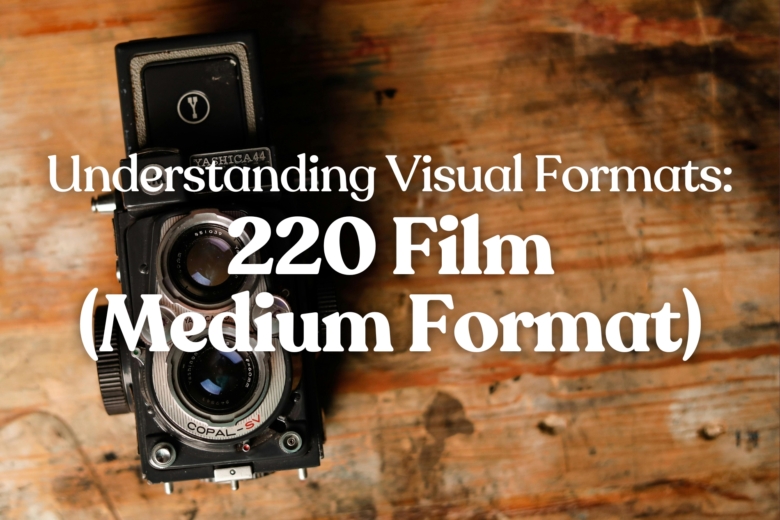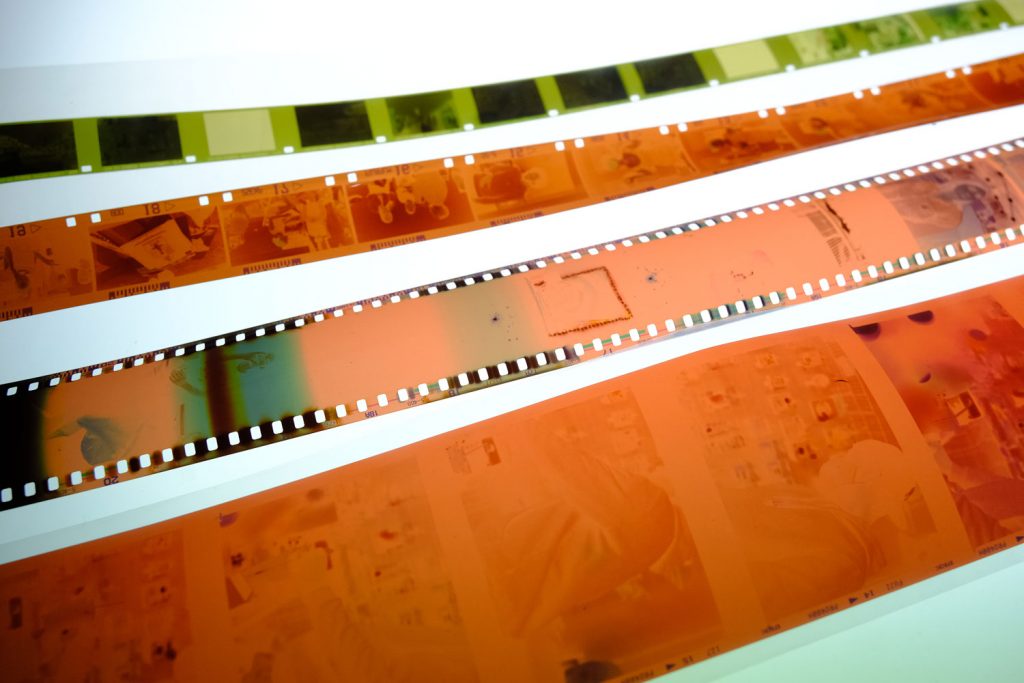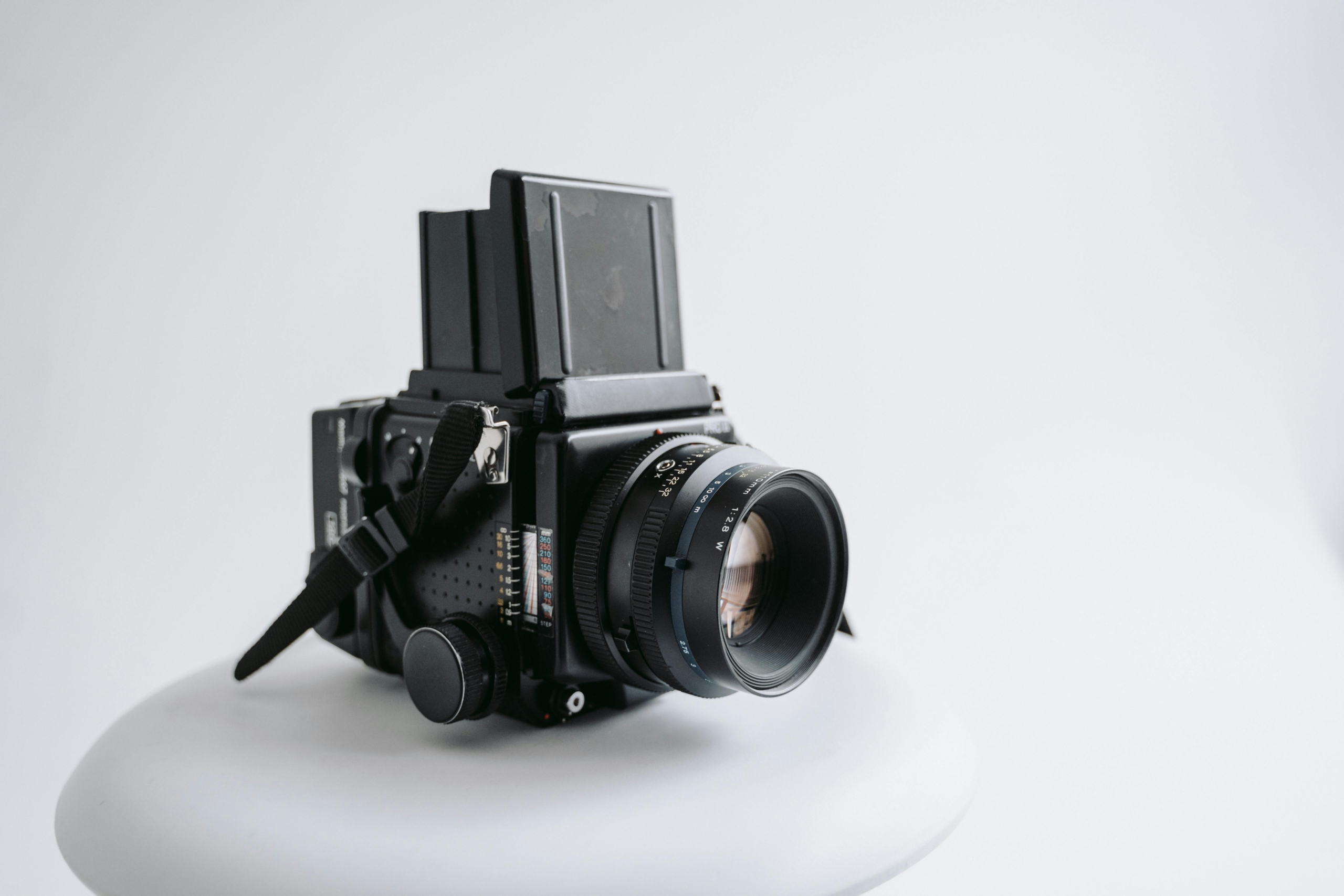If you’ve spent any time exploring the world of medium format photography, you’ve probably come across the term 220 film, and maybe seen rolls labeled as 220 format film or even 220 slide film. But what exactly is it, and why don’t you see it around much anymore?
In this guide, we break down what 220 film is, how it compares to 120 and other vintage film formats, and why it was a favorite among professional photographers. Did you know that it almost had a revival a few years ago?
WHAT IS 220 FILM?
220 film is a type of medium format roll film introduced by Kodak in the 1960s.
It’s the exact same width as 120 film (about 60mm wide), but it’s twice as long, so it can hold twice as many exposures. 220 format film was used mostly in professional and studio settings, just like its shorter counterpart. It was particularly popular with photographers who needed to shoot a large number of images, like fashion shoots or weddings. They could stay in the zone without having to stop and reload the film as often.
However, 220 film didn’t have the protective backing paper that 120 film did throughout the roll. This made it thinner and more compact (convenient!) but also more prone to light leaks or scratches if handled carelessly (not so great!).
This film format could only be used in cameras with specific film backs or an adjustable pressure plate, which could accommodate the larger number of frames.
As the world embraced digital and the demand for film dropped, the 220 film size started to fade from the market; most manufacturers stopped making it by the early 2010s.
Why USE 220 FILM?
220 film offered a lot of benefits in its prime.
- Twice the number of exposures: Photographers could get double the number of shots with 220 film vs. 120 film. That meant less downtime changing film, which was great for fast-paced photography sessions.
- Same great image quality: 120 film creates a distinctive look. As 220 film had the same width and formats as 120, it had the same sharp details, depth of field, and rich tones.
- Compatible with many pro-level cameras: Medium format cameras like the Mamiya RB67, Bronica ETRS, or Pentax 645 often supported 220 film with the right film back or pressure plate setting.
220 FILM vs. 120 FILM: WHAT’S THE DIFFERENCE?
The difference between 120 and 220 film is nearly impossible to spot when you’re looking at a single frame. They’re both medium format roll films, and are the same width. But a few key differences impact how they’re used and what results you get.
| 120 Film | 220 Film | |
|---|---|---|
| Number of exposures | 12 (6×6), 15 (6×4.5), 10 (6×7) | 24 (6×6), 30 (6×4.5), 20 (6×7) |
| Backing paper | Full-length backing paper | Backing paper only at the ends |
| Camera compatibility | Supported by most medium-format cameras | Requires a 220-compatible back or switch |
| Current availability | Still produced by some brands | Largely discontinued |
COMPARING 220 FILM TO OTHER NEGATIVES
220 film is not the only medium format roll film that had its heyday last century and then faded from popularity. Other similar 6 cm roll films include the 105, 117, and 620, which share a few similarities with 220 film.
220 FILM vs. 105 AND 117 FILM
105 and 117 were precursors to 120 film, introduced by Kodak in 1898 and 1900, respectively. The 105 was the original 6×9 cm format roll film for the brand’s first folding camera, and 117 film was for their first Brownie camera, in a 6×6 cm format.
Both are about the same width as 120, but with different spools and fewer exposures.
220 FILM vs. 620 FILM
Three decades later, Kodak introduced the 620 format in 1931, intended as an alternative to 120 film. Designed to fit more compact consumer cameras, it became instantly popular. The image size and exposures were the same as 120, but thanks to a slimmer spool, the film was incompatible with most 120 cameras without modification.
Though they had some competition, 120 and 220 film remained the industry standard. Offering twice the number of exposures, 220 was a standout choice for pros. Formats like 105 and 117 were phased out as camera designs became standardized around 120.
AN ATTEMPT AT REVIVING 220 FILM
A few years ago, we came close to seeing 220 films brought back to life. Analog film company CineStill launched a crowdfunding campaign to restart production of 220 film. The campaign was a success and served as proof that there was still a loyal niche of medium format shooters who wanted to see the film come back.
But the craze didn’t last, and despite that early enthusiasm, demand dropped off quickly.
Ultimately, this is largely because 120 film can be shot in a 220 camera, making 220 film redundant. Though it may have had a strong nostalgia factor, there wasn’t a practical reason to pay more for a 220 roll when a 120 would do just fine. It’s also much cheaper to buy 120 film vs. 220 film.
DIGITIZING 220 FILM
While 220 film may no longer be the go-to format it once was, its place in photography history is well earned, thanks to its double length and ability to produce high-quality images. Sure, its revival was short-lived as the need for more exposures became less necessary, but 220 still holds a certain appeal for collectors and photography fans.
If you still have old rolls of 220 film — or any treasured photos or home movies — sitting around, let EverPresent bring them back to life. We specialize in digitizing old media formats, from film and tapes to slides and audio cassettes.
Get in touch today to learn more about our digitizing services.




